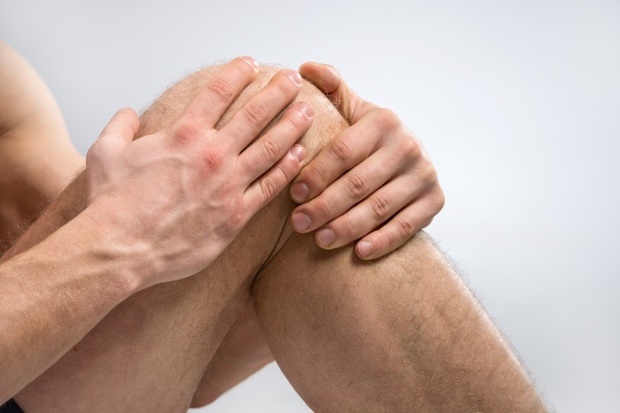There are as many ways to train as there are coaches, plans, online articles and books.
Even seasoned riders can get lost in the sea of intensity zones, HIIT workouts, mobility moves, plyometrics, strength work and core training.
That’s because coaching and training advice trickles down from the professional tiers, where you need meticulously monitored training plans to squeeze out every potential watt for even the smallest marginal gains.
But for the average rider who just wants to get fit and pick up some speed and stamina to hang with (or hammer with) their usual riding crew, it doesn’t have to be that complicated.
The first step, of course, is to ride your bike! That lays your foundation.
Then build on it by hitting the following training high notes to develop strength, speed, mobility, and stability.
1. Burpees
Cycling by itself doesn’t do much to develop core strength – in fact, core strength often suffers in cyclists. But that doesn’t mean your core isn’t critical to cycling.
Research shows that when the core fatigues, pedalling mechanics break down, paving the way for poor performance and injuries.
Cycling also doesn’t do much to build your bones. One seven-year study of competitive master cyclists found they actually had lower bone density than their non-athletic peers. So resistance training and/or some impact exercise are important.
One word here: Burpees. This multi-faceted move that combines push-ups, squats and jumps can bolster your core, strengthen key cycling muscles and help you build bone density.
As if that weren’t enough, a study published in Applied Physiology, Nutrition, and Metabolism showed that active women who performed just one set of 8 x 20 seconds (with 10 seconds of rest between 20-second reps) of a single whole-body aerobic–resistance training exercises like burpees four days a week not only improved their aerobic fitness as much as their peers who ran on treadmills for 30 minutes four days a week, but also significantly improved their muscular endurance, a huge benefit for long, hilly rides.
Do it: Perform 10 to 15 reps, two to three sets, two to three times a week.
- Stand straight arms at sides.
- Squat down, placing hands on floor, shoulder width apart.
- Jump legs back into high plank, pushup position.
- Perform pushup.
- Jump legs toward hands, back into the squat position.
- Extend legs and jump up, swinging arms overhead and repeat.

2. Tabatas
Named after exercise scientist Izumi Tabata, these all-out efforts train your body to recruit maximum muscle fibres and to fire them faster as well as raise your lactate threshold, which makes even your hardest rides feel easier.
They also help you hang onto your precious fitness when time is tight and you can’t squeeze in longer days in the saddle.
Because they’re super short, it’s also easy to psyche yourself up for them (one set takes just four minutes, which includes the rest intervals). Adding them to your usual training can help you see improvements fast.
In a study published in the Journal of Sport Science & Medicine, exercisers who added just one high-intensity interval session, like tabatas, to their usual moderate cardio-training routine improved their VO2 max by 10% compared to a 3.9% improvement among their peers doing a similar amount of moderate training alone.
Do it: Perform once a week
- Warm up for five to 10 minutes.
- Pedal as hard as possible (you’re going for maximum power output) for 20 seconds.
- Soft pedal for 10 seconds.
- Repeat six to eight times.
- Rest four to five minutes.
If you are accustomed to interval training, repeat for another set – or two, if you’re feeling game. If you’re new to intervals, stick to one set.
3. The Founder
If you’re like most people, you spend a great deal of the day sitting. All that time planted on our behinds puts our glutes on extended inactive duty to the point where they eventually stop doing their job when we want them in action, like keeping us stable in the saddle and helping us charge up hills.
Keep your glutes – as well as your hamstrings and the muscles that support your spine – strong and active with one simple move: the Founder, the keystone move in Foundation Training.
The Founder is grounded in glute activation and strengthens the whole posterior chain from your shoulder blades to your knees for better mobility and injury prevention.
Do it: At least once a day
Stand with your feet shoulder-width apart, knees slightly bent, and weight on your heels. Hinge forward from your hips, pressing your butt back and extending your spine. Reach back with your arms, pulling shoulders down toward your butt. Hold 15 seconds.
Bring your arms up overhead and reach forward with hands and press back with your hips. Hold 15 for seconds.
Fold forward again, keeping your back flat and knees bent. Breathe deeply a few seconds. Place your hands on your thighs and return to a stand.
4. Threshold drills
The cornerstone of cycling improvement is raising your lactate threshold so you can produce more power at a comfortable heart rate. Probably the most effective way to increase your power at threshold is to perform long, steady intervals where you hover right at or just below threshold.
These intervals are especially effective for flatlanders who want to improve their hill climbing ability without traveling to an actual hill.
Just ask Mount Washington women’s record (1:07:32) setter Victoria DiSavino of Buffalo, New York.
“I work long hours so I don’t have the opportunity to travel to the hills to train,” she says. “I just go out and do three 20-minute efforts at threshold, which is pretty much the equivalent of the power you use to go up Mount Washington.”
Threshold drills are relatively easy to do but require concentration because it can be easy to let your mind (and your effort) drift.
Do it: Perform once a week
After a good warm-up, ride 10 minutes at a steady effort, at an exertion level of 6 to 7 on a 1 to 10 scale, about 85% of max heart rate and where you can speak just a few words at a time.
Recover for five to 10 minutes (you’re aiming for adequate recovery, so you can maintain your target intensity for the next effort), and then repeat two more times.
Once those feel easy, do two to three 20-minute steady-state efforts, recovering for 10 to 20 minutes between each.
Read more: Lactate threshold 101
This article originally appeared on www.bicycling.co.za
Image credits: iStock
Selene Yeager












